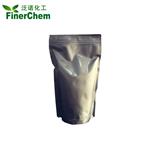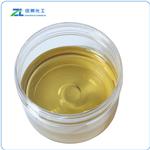Chemical Properties
2-Thienyl mercaptan has a very unpleasant, burnt caramellic and sulfuraceous odor with a similar flavor.
Chemical Properties
Clear yellowish to orange liquid
Uses
2-Thiophenethiol is used in biological studies to evaluate the changes in key odorants of hazelnut induced by roasting.
Preparation
By heating sodium sulfosuccinate with phosphorous trichloride; also by reduction of thiophene-2-sulfonyl chloride.
Definition
ChEBI: Thiophene-2-thiol is a heteroarene.
Synthesis Reference(s)
Journal of the American Chemical Society, 75, p. 6316, 1953
DOI: 10.1021/ja01120a518
Synthesis
A three-necked flask fitted with a mechanical stirrer and a 600-ml dropping funnel filled with dry nitrogen is charged with 500 ml of tetrahydrofuran and 56 g (53 ml, 0.67 mole) of thiophene. This mixture is stirred under nitrogen and cooled to ?40° with an acetone–dried ice bath while 490 ml (0.662 mole) of 1.35 M n-butyllithium in pentane is added over 5 minutes via the dropping funnel. The mixture's temperature is held between ?30° and ?20° for 1 hour, then lowered to ?70° by adding dry ice to the bath. Powdered sulfur crystals (20.4 g, 0.638 g) are added to the stirred mixture in one aliquot. After 30 minutes, the temperature is allowed to rise to ?10°, and then the yellow solution is carefully poured into 1 l of rapidly stirred ice water. These aqueous extracts are combined with the aqueous layer, and the whole is chilled and carefully acidified with 4 N sulfuric acid. This aqueous phase is immediately extracted with three 200-ml portions of diethyl ether. The combined ether extracts are washed twice with 100 ml portions of water to remove acid and remaining tetrahydrofuran and dried over anhydrous sodium sulfate. After the removal of ether, the residual golden-brown oil is purified by distillation at reduced pressure. The portion boiling at 53–56° (5 mm) is collected, yielding 49.5–53.5 g (65–70%) of 2-thiophenethiol as a yellow oil.





